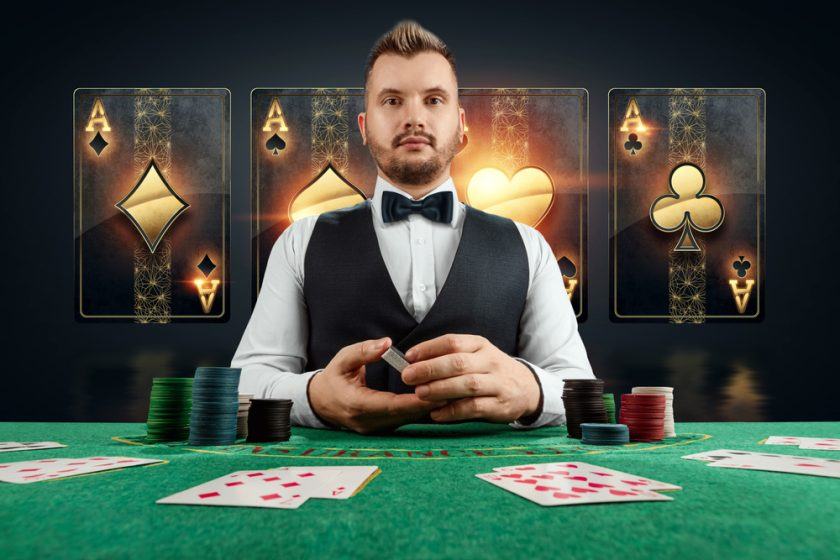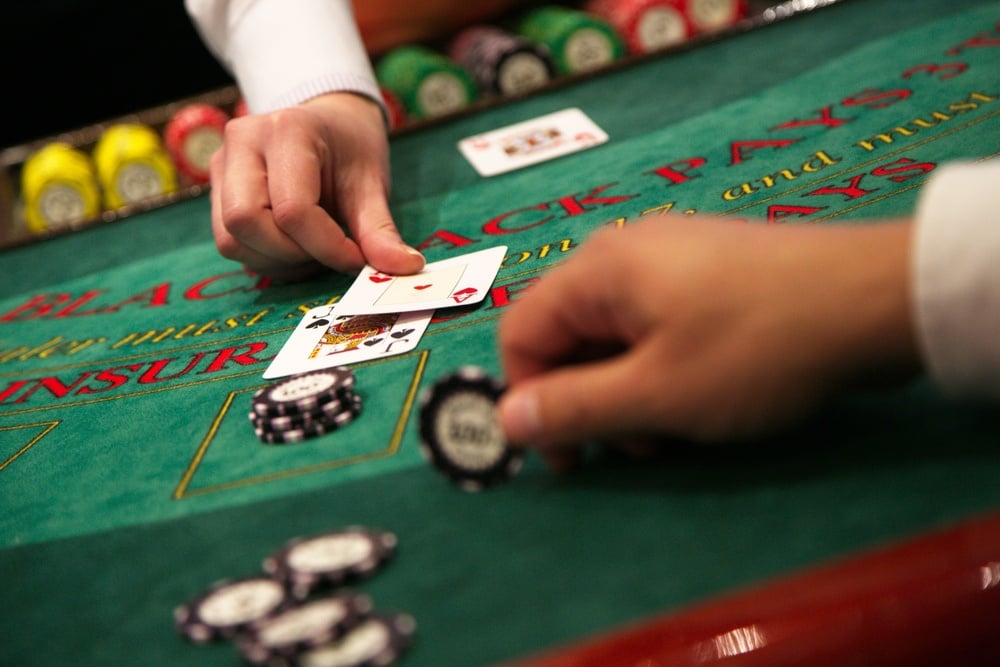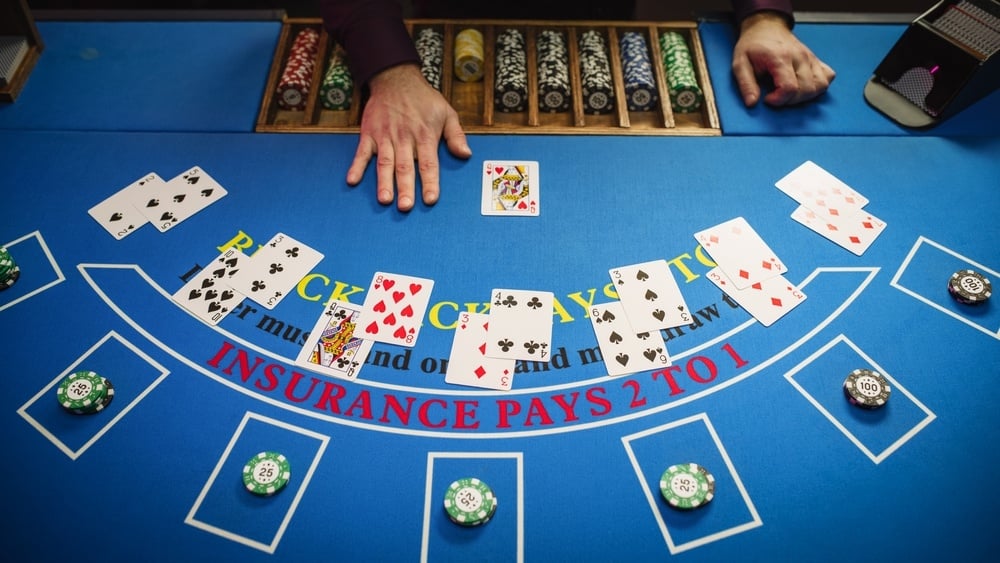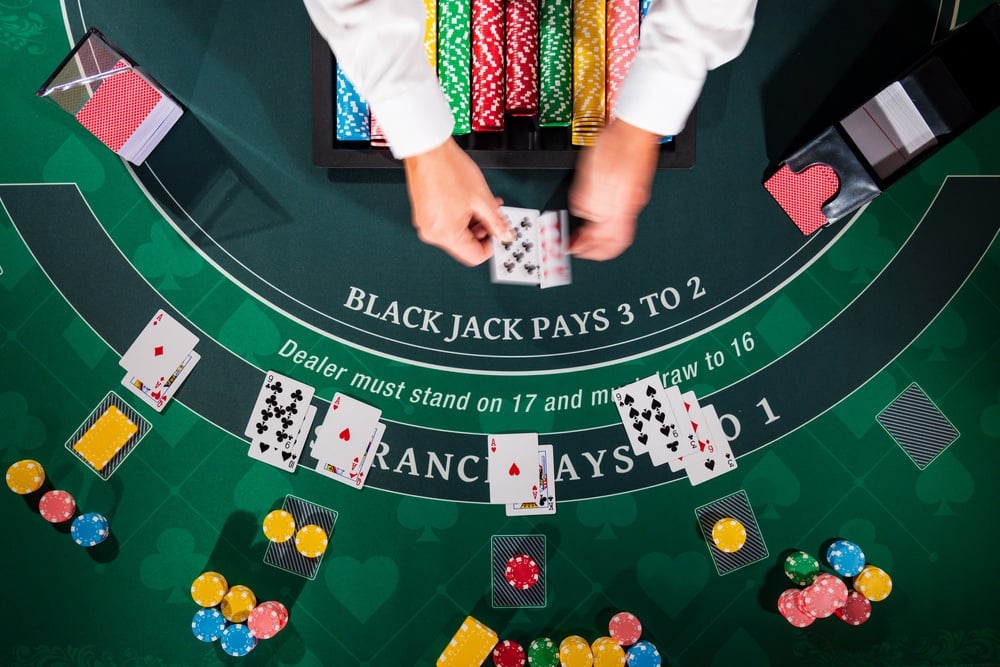Mastering Blackjack Tactics: How to Use the Dealer’s Upcard to Your Advantage

Unlock your edge at the blackjack table by analyzing the dealer's upcard.
The Role of the Dealer’s Upcard in Blackjack Decision-Making
In the game of blackjack, the dealer’s upcard is the single card displayed face-up at the start of each round. This card isn’t just for show-it’s a critical piece of information for every player at the table. By reading the dealer’s upcard, you can refine your choices on whether to hit, stand, double down, or split, giving you a strategic edge.
- **Significance of the Upcard:** Watching what card the dealer reveals helps you anticipate their potential hand strength and adjust your tactics accordingly.
- **Types of Dealer Upcards:** Cards valued at 7 through Ace are considered “strong,” making it harder for the dealer to bust, while cards 2 through 6 are deemed “weak” and put the dealer at a disadvantage.
- **Strategy Adjustments:** When the dealer shows a weak upcard, you may opt for aggressive plays, such as doubling down. If the upcard is strong, caution is your ally.
- **Predicting Outcomes:** By learning the statistical likelihood of the dealer busting with certain upcards-such as a 4, which leads to a bust over 40% of the time-you can make smarter choices.
- **Accessing Strategy Resources:** Numerous strategy charts exist, providing optimal moves for each player hand based on the dealer’s visible card.
Understanding and interpreting the upcard’s significance turns every decision into an opportunity to maximize your potential wins.
Why the Dealer’s Upcard Is Fundamental to Winning Tactics
Blackjack is a "dependent" game, meaning every card that’s been dealt influences the odds and your future decisions. The more you track which cards are already in play, the better your chances are at making accurate predictions about the remaining deck-especially if you’re adept at card counting. But even for casual players, focusing on the dealer’s upcard leads to consistently better decisions each round.

Image Credit Kitreel/Shutterstock
Using the Dealer’s Upcard to Inform Your Blackjack Strategy
Every round, you get the benefit of seeing the dealer’s upcard before completing your own hand. This early insight is invaluable:
- **Example Play:** If the dealer has a 2, 3, 4, 5, or 6, their hand is statistically more likely to bust. In response, if you’re holding a stiff hand like a hard 16, it’s generally advisable to stand rather than risk busting yourself. On the flip side, if the dealer has an 8, 9, 10, or Ace, your odds diminish, and taking another card might be warranted-even with a hard 17.
- **Key Takeaway:** Your moves should directly respond to the dealer’s visible card. Mastering this pivot is at the heart of all winning blackjack strategies.
Dealer Upcard Rules: How the Game Unfolds
The dealing sequence in blackjack is designed to ensure transparency and structure:
- Each player at the table receives one card, face-up.
- The dealer also deals themselves a card.
- This process repeats for a second round of cards. Only after all cards are dealt does the dealer flip over one of their cards, making it the upcard.
- This upcard informs the next set of decisions for every player.

Image Credit Netfalls Remy Musser/Shutterstock
**Insurance and Dealer’s Ace:**
If the upcard is an Ace, the dealer pauses to offer players the option of insurance against blackjack. If the dealer’s hidden card makes a natural 21, insurance bets are paid and the round concludes. If not, the hand continues with regular player decisions.
**Dealer Hitting and Standing:**
After player actions, the dealer turns over their hole card. If the dealer’s total is less than 17-or a “soft” 17, depending on house rules-they must draw additional cards. With 17 or higher, the dealer stands and final outcomes are determined.

Image Credit Kitreel/Shutterstock
Does the Dealer Really Have an Advantage Over Players?
Although the dealer manages the game flow, they are bound by predetermined rules. They do not make strategic choices-only the players do. In standard settings, the dealer acts simply as the facilitator, adhering to strict protocols for every hand.
How the House Edge Influences Blackjack Outcomes
The house edge in blackjack mostly arises from the sequence in which decisions are made; players must play out their hands before the dealer acts. Under optimal conditions with all player-friendly rules in place-such as doubling after splits, allowing resplits, and surrender options-the house edge can be as low as 0.54%. However, most casinos adopt rule tweaks to increase their advantage.
**House Edge Example:**
If a table pays 3:2 for blackjack and permits resplitting Aces, the casino’s edge is minimized. Reduce those options-for instance, by paying only 6:5 for blackjack or forcing the dealer to hit on soft 17-and the house edge can soar beyond 1.7%.
**Player-Positive Expected Value (PPEV):**
With comprehensive knowledge and flawless card counting, players can potentially flip the odds for a small but real advantage, known as PPEV-sometimes reaching up to 1.7% in the player’s favor. In reality, few players achieve this consistency.
**Human Factor:**
Most casual players deviate from optimal strategy, which can push the house edge up to 20% or more, depending on mistakes and poor decisions.
Exploring Blackjack Variants: Know the Differences
Beyond traditional blackjack, casinos offer a variety of alternative games-like Spanish 21 or tables with multiple side bets. These “gimmicks” usually alter the deck composition or introduce additional betting opportunities, significantly increasing the house’s advantage. Always ensure you recognize the rules and odds for any non-standard variant before you join.

Image Credit Marko Aliaksandr/Shutterstock
How to Decipher the Dealer’s Upcard Value
The dealer’s upcard follows traditional blackjack values: numbers carry their face value, face cards count as 10, and Aces can be worth 1 or 11. Recognizing what the upcard means for the dealer’s hand is key.
- **Weak Upcards (2-6):** Dealer is more likely to bust. Consider standing on a moderate total.
- **Strong Upcards (7-Ace):** Dealer is favored to reach a good total. Consider being more aggressive (hitting or doubling).
Strategic Play: Deciding When to Hit, Stand, Double Down, or Split Based on the Dealer’s Upcard
Your decision tree in blackjack changes based on what the dealer shows. Here are practical guidelines:
- If the dealer displays a 4, 5, or 6, and you hold 14, 15, or 16, the best move is usually to stand.
- Should the dealer show an 8, 9, 10, or Ace (without having blackjack), and you have a hard 17 or less, hitting is generally advisable.
- When the dealer has 3, 4, 5, or 6, and you’re dealt 9, 10, or 11, this is often a strong spot to double down.
- With paired hands (like 8-8, 7-7, or Aces) and the dealer’s upcard from 2 through 9, opting to split is statistically sound.
For a detailed breakdown covering all hands, consult an up-to-date basic strategy chart tailored to the rules of the table you’re playing.
Should You Hit a 17 When the Dealer Shows a 10?
The answer depends on the type of 17 you have:
- **Soft 17:** Always hit. The Ace gives you flexibility; you can’t bust on the next card.
- **Hard 17:** For most players, hitting is recommended, unless you have insight into remaining cards (via counting), in which case you may choose to stand if the shoe is rich in high cards.

Image Credit Marko juliannedev/Shutterstock
Choosing the Best Blackjack Table: Maximize Your Chance of Success
Brick-and-mortar casinos and online platforms often host multiple blackjack tables, but key rule variations can have a substantial impact on your bottom line.
- **Blackjack Payouts:** Opt for tables paying 3:2 on a blackjack win rather than 6:5, as the latter increases the house edge by about 1.7%, significantly reducing your expected returns.
- **Dealer Soft 17 Rule:** Tables where the dealer stands on all 17s are more player-friendly. If the dealer must hit a soft 17, the house edge rises by about 0.2%.
- **Other Subtle Rule Shifts:** Always review table signage and house rules for restrictions on doubling, splitting, or offering surrender. Even small adjustments can have major effects over time.
Before you sit down-whether physically or virtually-educate yourself on the table rules. Your informed choice will pay off in the long run.
Title Image Credit Marko Aliaksandr/Shutterstock













